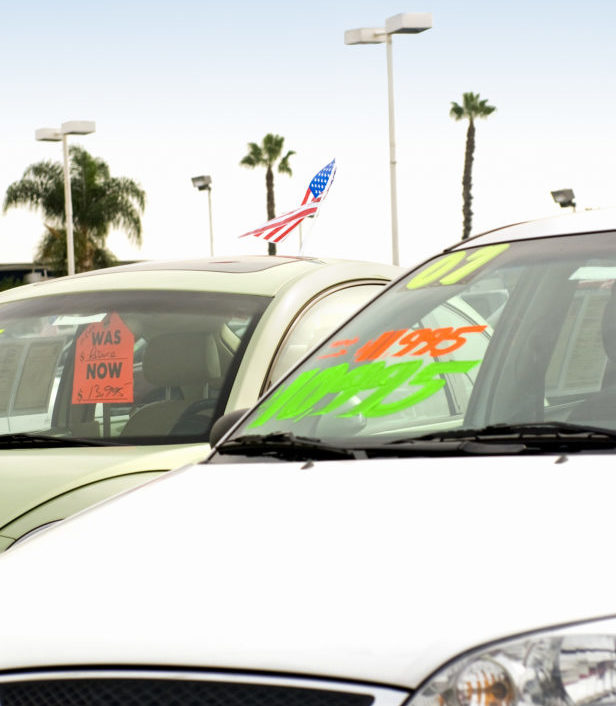BHPH Thrived During the Pandemic, but Must Continue to Embrace Technology Afterward.
While the pandemic has been devastating for some businesses – and even entire industries – the Buy Here-Pay Here industry prospered during 2020, according to the latest Subprime Industry Perspectives and Trends report.
Unlike convenience stores, restaurants, bars and other service providers, the BHPH auto finance business not only adjusted to COVID-19 challenges but had more success than anyone could have anticipated.
Pandemic disaster and necessity provided new opportunities (and challenges) that fueled new innovation.
Consumers adapted quickly to new ways of doing business. People who barely used e-commerce before the pandemic increased their online shopping by more than 400 percent, according to Accenture.
The pandemic also had a significant impact on the workplace, as working from home became the new norm for many employees.
In the subprime auto finance business, the pandemic’s influence on the consumer was similar.
Subprime customers opted to shop online instead of spending time searching vehicle inventories at dealerships.
Health concerns and other restrictions caused consumers to opt for less time inside dealerships, which meant shopping for vehicles online and closing purchases electronically with only a test drive in between.
Operators who adjusted and implemented technology and procedures to facilitate that online business prospered, while others struggled.
Many industry veterans believed BHPH vehicles could not be sold and financed with subprime customers over the Internet. The pandemic proved them wrong.
And it’s unlikely the e-commerce trend will disappear as the pandemic ends.
E-commerce will not replace brick and mortar dealerships, but the changing landscape requires operators to integrate technology that complements – not replaces – their historical operating practices.
Operators need to embrace online technology and social media, not resist it. Those who say they can’t afford to invest in technology today will not remain competitive tomorrow.
Social media must be used to “connect and collect” with and from subprime customers. A primary example is texting technology.
Subprime customers live inside their smartphones and use Facebook, Instagram and other social media as their main source of information and entertainment. Operators who used texting with social media were more successful during the pandemic than those who did not.
Texting will be an important tool in the future of the subprime auto finance business. Other technologies also provide business solutions to help solve business problems.
Dealer management software has evolved significantly during the past five years. The best systems today are Internet-based and provide a fully integrated network to other solutions.
Technology integration is a vital ingredient for improving operating efficiency. The data stored inside a DMS provides vital intelligence which should be mined and used to make better operating decisions and validate portfolio performance.
DMS solutions that integrate with GPS/ payment assurance devices, CRM technology, texting, credit scoring and portfolio analysis, and that include online credit applications, inventory management and sourcing technology, and other integrations are the tools needed to succeed after the pandemic ends.
Higher inventory costs and capital availability are two barriers to emerging successfully from the pandemic.
Inventory acquisition remains a continuing challenge. Fortunately, excellent sourcing tools are available to locate inventory nationally and to facilitate acquisition searches.
Operators who used online tools to source inventory during the pandemic fared better than those who were still using older, labor-intensive manual methods.
Capital will be needed to fund subprime market opportunities ahead. However, the demand for additional capital will outpace supply.
The pandemic forced capital providers to really know and understand their borrower portfolios.
Lenders proactively monitored portfolio performance trends very carefully during the pandemic. Portfolio performance reviews focused on cash collection rates, delinquency, recency, deferments, repo rates and charge-offs.
Positive performance metrics were needed to keep the outside capital flowing into the subprime industry.
Expect that trend to continue when the pandemic ends. As one lender said, “If you don’t have metrics today, you won’t be borrowing money tomorrow.”
For operators who are unable to obtain lines of credit sufficient to fund their post-pandemic needs, contract sales to third parties might be their alternative.
Contract purchasers experienced more normal levels of contract availability in the second half of 2020, and contracts brought better pricing with the additional aging.
In 2021, originations have improved with another round of economic stimulus and contract purchasers are expected to be active in the market this year.
In the margin-compressed, competitive auto finance business of today, technology plays an important role. Fortunately, the technology currently available is the best in history.
While technology plays an important role in future operating success, operators must not lose their personal interaction with subprime customers.
Remember, the industry is still named Buy Here-Pay Here for a reason. Building strong personal relationships with customers should not be lost with the growth in e-commerce activity.
That presents some new challenges as customers spend less time inside dealerships and do more online without personal interaction.
As 2020 and the Trump administration came to a close, the new leadership in Washington has increased the regulatory scrutiny over the used car industry. State attorneys general will be more active with enforcement actions to generate revenue.
Operators need to be vigilant in their compliance efforts. Increased e-commerce customer activity provides some different compliance challenges for subprime operators.
While the pandemic hurt many small businesses, it pushed others to be more innovative by looking at new ways to reach customers and continue revenue streams. Those changes will remain important long after the effects of the COVID economic stimulus end.
Operators must adapt and welcome the changes, not resist them, to prosper in the future.
How can you get started on the road to future success? Get a copy of the 2020 BHPH Market Perspectives and Trends Report from NIADA or download it free at www.subanalytics.com, and learn from the past.








